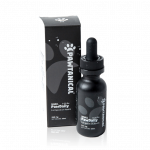Introduction to Arthritis in cats
Is your cat less mobile nowadays? Are they not fond of jumping from high places and chasing things anymore? This can be signs of arthritis, especially if they’re older. The good news is that while this can spell trouble for most fur parents, it is actually quite manageable.
Cats are animals that require the ability to move without pain. If your back has ever hurt, you can only imagine the pain a cat with Arthritis could feel if it affected their tail the same way. They rely on agility to move, so if your cat does get arthritis it can really impact their quality of life. This, in turn, can impact everyone around them, as an unhappy cat is just not going to be happy. And we all want our pets to be happy, and pain free, so read what we have found out about cats with arthritis.
What is feline arthritis?
It is similar to human arthritis, and it pertains to the chronic inflammation of the cat’s joints. This is caused by the wearing down of the cartilage, which acts as a cushion between the bones and the joints. Because of this, their joints rub with great friction every time they move, which then results in inflammation and pain for them. Here is a good video of things to look out for that might be an indication that they are suffering from arthritis:
Because of this, they may feel pain with every step that they take. Most cats suffering from this start to jump and walk less, become more aggressive other cats, and spend most of their time sleeping. This lethargic lifestyle then becomes a gateway to other diseases, such as obesity and cancer. This cannot be directly treated, and instead, can only be managed to keep its symptoms minimal. This is why it should be immediately addressed.
What causes arthritis in cats?
Feline arthritis comes from multiple factors. The first factor that affects this is how the cat is built. Some breeds are more susceptible to this, especially if their skeletal structure gives more impact on their bones whenever they move. This is especially if your cat is obese or overweight. As you may imagine, their bones and joints will experience more friction if they need to carry more body mass.
Some cats also develop this due to stunted growth brought by injuries. This usually happens to cats who’ve had a history of infections of the joints, injury to their muscles, and fractures. It is especially more expected when these injuries happen during their years of growth.
Surgery for cats with Arthritis
Another factor is if they’ve had orthopedic surgery, as natural complications brought by these can cause irregular bone growth. We would say that this is pretty extreme and not something to look at unless you really think that they are beyond hope of getting help with supplements or prescriptions.
Cats nutrition and avoiding Arthritis
The final factor is their nutrition. After all, what they eat affects the strength and integrity of their joints and bones. If they weren’t able to receive calcium and Vitamin D regularly, they would most likely have arthritis later on.
Keep in mind that arthritis can be a result of the combination of these. It happens progressively, and so, the disease is usually detected once they become older.
Can feline arthritis be avoided?
It cannot be completely avoided, especially if your cat’s breed is more susceptible to the disease. It is usually seen in Himalayan and Siamese cats, so if you want to try to avoid it we would sadly have to say that these two breeds might not be the best choice.
However, you can adjust their lifestyle and nutrition early on to lessen their chances of developing arthritis. Here are our tips to giving your cat the best chance of avoiding arthritis in its life.
Making the right diet choices for your cat to avoid arthritis
First, we recommend giving them a well-balanced diet. It must be nutritious, yet also balanced in terms of calories so that they do not become overweight. While chubby cats are adorable, they are usually unhealthy and have shorter life spans, which is why you must control their diet.
Encourage movement to avoid arthritis in your cat
Next, you must encourage them to be more playful. Give them toys for playing, a space for exploring, and even treats for when they become more active. Through this, their body becomes more exercised, and their whole body becomes healthier. A healthy body is better at fighting off issues such as disease and chronic conditions.
Stay up to date with your Vet to monitor your cats health
Finally, be sure to have regular visits to the veterinarian. They can diagnose your cat through physical examinations, x-rays, and digital imaging to see the condition of their joints and bones. We especially recommend this if your cat is older than 5 years. Although going to the vet might be expensive, we suggest that you do keep up some type of routine. It is just like a humans health, if you do check ups you can avoid something becoming a lot worse when its found later on. Treating issues as soon as they start will give you, and your cat, the best chance of avoiding issues later on in life when the issues are more advanced.
What can you do to help your cat with its Arthritis?
The disease cannot be treated completely, as it is progressive. Still, you can manage its symptoms to maintain your cat’s quality of life and to extend their lifespan.
Medicines for cats with Arthritis
Pain medication such as NSAIDs are the first line of treatment for cats. This is used to lessen the chronic pain that they may get from inflammations. Through this, they can be more mobile. Right now there are two NSAID options, that are FDA approved. These two options for cats are meloxicam and robenacoxib .
Some veterinarians also administer corticosteroid anti-inflammatory drugs to lessen the swelling of your cat’s joints. Keep in mind, though, that the two should not be taken at the same time.
Some also recommend using physical therapy for animals. This includes guided exercise and water therapy for your cats.
One thing to NEVER do , is give your cat Tylenol. It is toxic for cats, so although it might help your arthritis it will not help your cat… at all.
CBD for cats with Arthritis
One of the products that many are recommending nowadays is CBD or cannabidiol for cats with Arthritis. This substance comes from the hemp plant, and it is distilled and treated to be safe and effective for our feline companions.
This interacts with their endocannabinoid system or ECS to 1) lessen inflammation of their joints and 2) reduce their sensitivity to pain. CBD has also been seen to be effective for humans, dogs, and horses. Here are some of the locations where the receptors are located within your cats body, to give you
Why we like CBD as a treatment for Cats with Arthritis
For us we have found a lot of benefits from using CBD with cats. The first, in all honesty, is that it is easy. If you have a cat that hates to take pills , you know the pain that can occur. With CBD, you can get it either in an oil or treat form. Most of the times cats will easily take them, and you will see the results right away. The second aspect of CBD usage that we love, is that it usually doesn’t have any side effects. If you do give your cat a bit too much, the usual symptoms are a bit of laziness or an upset stomach. While neither of these options are great they are not deadly and can be fixed easily.
How to give CBD to your cat
The most popular form is the CBD oil. This mixes the substance with an oil carrier, such as hempseed, MCT or pumpkin seed oil. It is then dropped directly on their mouth (through a dropper) or mixed with other food.
There are also CBD cat treats, which simply mix the oil with chewable and flavored food. It is usually mixed with salmon, beef, or chicken flavor to make it easier to consume.
The dosage of CBD to be given everyday depends upon their weight. To be guided, simply read the instructions provided in its packaging. We always suggest that you start on the lower side of dosage recommendations, and work up from there until you see the results that you are want to see.
Difference between full spectrum, broad spectrum, and CBD isolate
One aspect of CBD that may confuse first-time buyers is the labels full spectrum, broad spectrum, and isolate.
Simply put, this pertains to which parts of the hemp plant are mixed along with the CBD substance itself.
Full spectrum blends mix everything in the plant, including phytocannabinoids and terpenes. This results in a stronger dose and more bitter flavor. But, this has a more inclusive ability to help. With Full spectrum there is a synergy, because you are getting the full impact of the plant versus just the isolated CBD. We suggest this as the best choice to start when trying out CBD to help your cats arthritis.
The broad spectrum blend is similar, except its THC or tetrahydrocannabinol levels are diluted up to insignificant levels. Through this, it becomes less potent and more palatable. The difference in taste will be very little, and in all honest you will be missing out on some of the synergy of the chemicals working together.
Finally, CBD isolates remove everything else but this substance. This is why it is easier to dose. Its flavor is also milder, but we often find that it is not as effective for treatment. This is because it is so pure that it can miss some of the synergistic effects of the other two options.
Final thoughts on helping cats with Arthritis
As we can see, arthritis does not need to be a death sentence for cats. They can still become as active and cuddly as they were when young. Once they are diagnosed with arthritis, be sure to manage their diet, follow a veterinarian’s medical advice, and encourage them to be more active.
We also advise giving them CBD as it can be effective for lessening the symptoms of chronic pain and inflammation. By giving it everyday along with their medications, their condition can be managed better. You can always try a combination of the things we have found to work, as there could be a synergy when using them together. However, if you are thinking of trying this we suggest you speak with your vet to ensure there are no issues with your plans. As every cat is different we always want to go the safest route possible, and that is done by having a clear communication path with your vet to determine the best way of moving forward for you and your cat.





[url=http://semaglutide.directory/]buy ozempic[/url]
Your comment is awaiting moderation.[url=http://flomaxms.com/]flomax otc uk[/url]
Your comment is awaiting moderation.